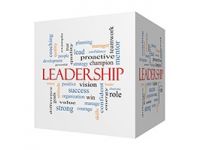
email: robin@rcla.co.uk
Latest news
September Coaching Programme 12/07/2018
Coaching for Results - New June Date 18/04/2018
Social Media Following 16/03/2018
Latest articles
Want your people to trust you? Put your trust in them. 10/05/2018
Fostering the behaviour, and culture, you want at work? 28/03/2018
Communication; think before you...dance? 23/02/2018
Blog
Articles by Month
What is the Role of a Leader?

In training or coaching we often discuss this very question, normally the answers are:
- To inspire others
- To engage with others
- To act as a role model
- To get things done
- To build a better future and so the list goes on.....
And when taken at face value, they make perfect sense, the question is then normally how?
We then look at the tools and techniques to help achieve this end.
BUT, surely there is deeper question that sits underneath all this? I think there is, and it is to do with people and how they feel about themselves. I have maintained this view for quite a period of time but was unable to express it apart from saying:
‘Make your people better than you are...', which sort of works but could be considered a little trite.
I then read our ‘recommended read' for this month, ‘Tribal Leadership'. I read it because I thought it might give some interesting insights into leading groups of people, and it did but not in the way I thought and it has made me think totally differently about leadership.
The message is quite simple - leaders lead tribes, groups of less than 150 people, which the tribes in Amazonia and Indonesia have done for centuries. These tribes form sub-tribes when reaching this number quite naturally. Hence leaders in big organisations have tribes who are made up of leaders who lead tribes etc etc.
Nothing too scientific there, I hear you argue.
Quite right, but what comes next is the concept of tribal levels. There are five levels, dependent upon the state of mind of the followers
Level 1: The
world sucks!
Level 2: My life
sucks!
Level 3: I am
great!
Level 4: We are
great!
Level 5: We are
making a difference!
There are significant differences in each of the mind-sets of these levels, which will lead to differing performance and challenge outcomes, so the first challenge is understanding where your tribe is.
The second challenge is then raising the tribe level. Raising the tribe level increases the self-esteem and self-worth of the tribe members which in turn increases engagement and performance levels.
So, the role of the leader? - to engage with tribe members to develop them as people, as well as employees, to make a difference - these are not mutually exclusive but are not often considered together.
Please feel free to read this months Recommended Read or contact me to discuss the content and thought process behind the theory.




